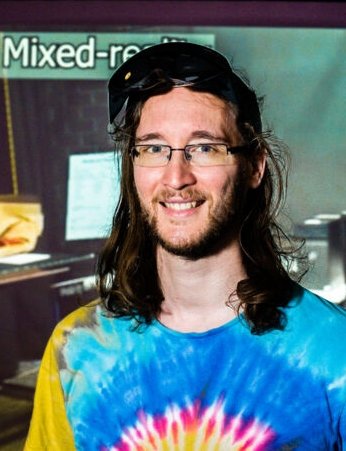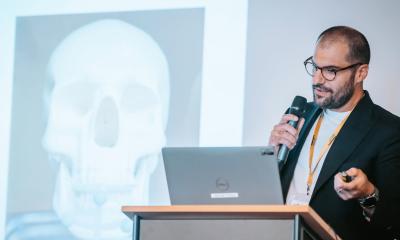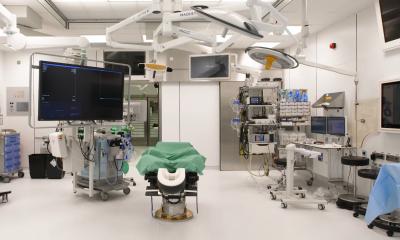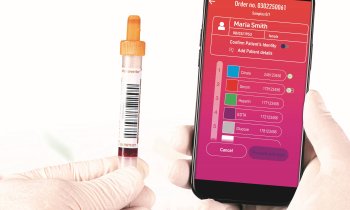
Image source: Linköping University; photo: Thor Balkhed
News • 3D visualisation and mixed reality
Is the future of autopsies digital?
It is already possible to perform part of the autopsy with the assistance of mixed reality, and fully digital autopsies might be achieved in the future. In the long term, this technology could render autopsies more efficient and legally certain, and also have uses in training and collaborations.

Image source: Linköping University; photo: Thor Balkhed
In an article published in the Proceedings of the 2023 CHI Conference on Human Factors in Computing Systems (CHI ’23), researchers from Linköping University (Sweden), Monash University and the University of Queensland (Australia) outline the possibilities of using so-called immersive visualisation technology to create a mixed reality in the autopsy room. The idea is that digital technology will facilitate physicians’ work.
“There are some things you can’t do digitally, such as weighing organs. But our tool could be a complement to real autopsies and a step towards eventually not having to cut into the body at all,” says Lonni Besançon, assistant professor in the Division of Media and Information Technology at Linköping University.
Autopsies are performed by a physician to determine the cause of death and consist of a medical examination of the body and its organs. In Sweden there are two types of autopsies: clinical and forensic.
Clinical autopsies are carried out to gain important knowledge about various diseases and possible treatments. Around five per cent of all deceased persons undergo a clinical autopsy. A forensic autopsy is carried out when there is suspicion of crimes such as murder or manslaughter. But also in cases of deaths caused by accidents, suicide or medical malpractice.
Forensic autopsies are required by law. But in the case of clinical autopsies, religious convictions or a no from a next of kin may result in the non-performance of an autopsy and the risk of losing important knowledge. There are also several challenges related to the autopsy itself. “The pathologist often has to compare their findings with both the police reports and the blood test results while at the same time making notes and checking CT scans. This means that they need to take off their gloves and wash their hands several times, which is inefficient,” says Besançon.
I think that within three to five years, if the new headsets perform better than current ones, pathologists will be able to work with a hybrid solution
Lonni Besançon
A major advantage is that digital autopsies can be performed several times over, which means that they can be shown in the court room as well as to colleagues online. But the researchers also see great potential in using the technology in teaching medical students.
By using information from CT scans, it is possible to build a virtual model of the deceased body. In the autopsy room, the physician has the real body in front of them, but wears a headset over their eyes making it possible to see a digital overlay, with a digital version of the body and a menu controlled by hand movements. The menu also contains masses of information that would not have been able to fit on a 2D screen simultaneously, such as reports and traditional CT scans. It is also possible to view different parts of the body layer by layer in 3D and perform certain tasks digitally, such as for instance measure various body parts.
This technology was developed in collaboration with autopsy technicians at the Victorian Institute of Forensic Medicine in Australia, who were asked to explain their needs and provide continuous feedback on the performance of the technology. But according to Besançon it will be a few more years before the technology becomes generally available in the field. “I think that within three to five years, if the new headsets perform better than current ones, pathologists will be able to work with a hybrid solution,” he says.
The next step of this research is to continue working on facilitating report writing and making it possible to integrate it with the autopsy. By for instance taking a screen shot from the headset and then delivering a verbal report, a written report can be generated automatically.
Source: Linköping University
03.07.2023











